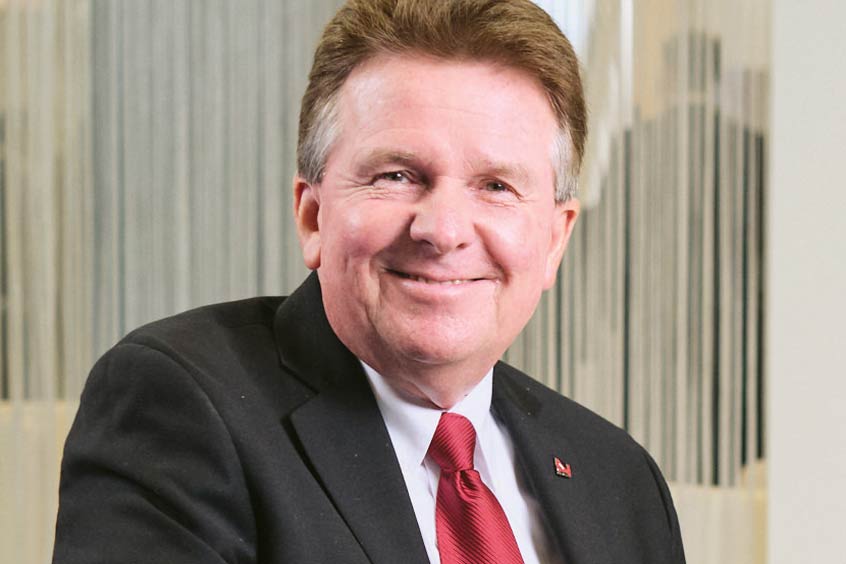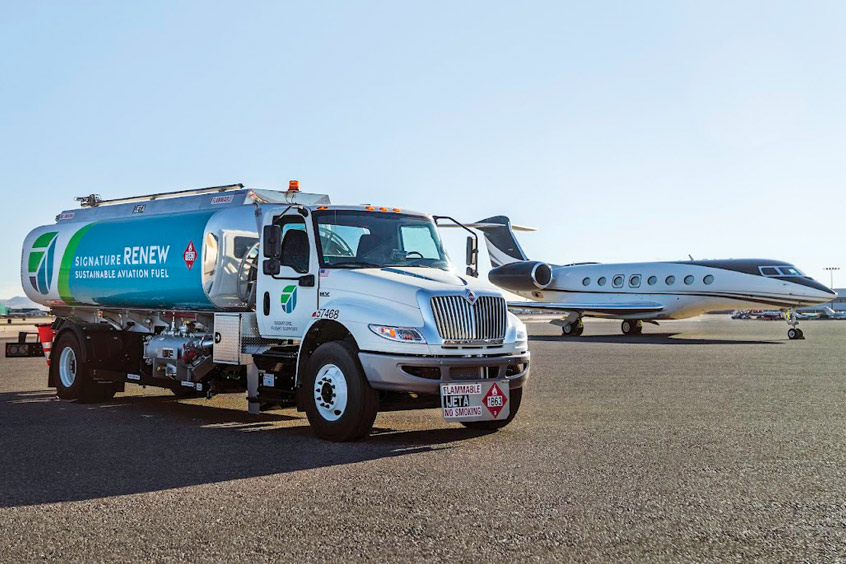




So how can operators and owners make eco-sensitive decisions when topping up the tank? We have some top tips to help you make the best choices. Thanks go to Air bp global aviation sustainability director Andreea Moyes, Avfuel manager of alternative fuels Keith Sawyer, Gulfstream director of flight operations Scott Evans, Honeywell vice president and general manager, power systems David Shilliday and Signature Aviation sustainable aviation fuel programme manager Jeff Talbert.
Buy SAF
As with most engines, Honeywell APUs and engines are qualified to run on 50 per cent SAF and the company is actively certifying all models to operate on 100 per cent SAF. It has recently provided an upgrade to the 131-9A APU which reduces fuel consumption by two per cent and CO2 emissions by 35.7 metric tons on an annual basis.
Look for measurable results
SAF uplifts should have a verifiable reduction in CO2 emissions. Signature includes these reductions on your invoice, which can in turn be logged however emissions are tracked. Avfuel will provide documentation needed to incorporate emissions reductions into a flight department’s ESG scoring.
Monitor your impact
Use a tracking framework and formalise your flight department’s approach to sustainability.
Book and Claim for SAF anywhere
You get to take the credit for your environmentally conscious decision. You can access SAF carbon reductions without being physically connected to the supply site; Air bp can deliver SAF into the supply chain at one airport location and ‘book’ the carbon reduction associated with it into a registry. You can ‘claim’ those carbon reductions at another location by purchasing traditional jet fuel along with the benefit of the lifecycle carbon reductions that have been registered in that registry. Avfuel offers book and claim on a full-load basis, so operators can buy a truckload of around 8,000 gallons of SAF, have it consumed where accessible, but receive the credit for the emissions reductions it provides with proper documentation for calculating.
Not all Book & Claim programmes are equal - CO2 reductions purchased through Signature Renew’s Book & Claim program are tied back to an actual load of jet fuel uplifted into an aircraft, and is reflected right on your invoice. Be wary of programmes that don’t provide a trail of documentation.
Consider bulk reductions
Tracing and offsetting CO2 emissions on a per flight basis can be administratively exhausting. Consider purchasing your CO2 reductions in bulk, perhaps in monthly or quarterly intervals. Signature has an inventory of CO2 reductions, which includes over five million gallons of SAF pumped to date, and makes tapping into a big source of SAF-created CO2 reductions easy without any markup from intermediaries.
Use more SAF to drive down the cost
While the price of SAF is at a premium compared to traditional jet fuel, the differential should narrow as SAF supply increases to meet demand.
Bulk delivery to home base
If you don’t have access to SAF, call a fuel supplier. Avfuel regularly works with flight department customers to supply SAF on either a limited or consistent basis.
Offset your carbon
Voluntary carbon offset programmes help operators reach net zero by purchasing carbon credits that invest in green projects. Emissions can be offset either per flight, adding carbon credits to an Avfuel fuel authorisation to offset a certain number of gallons; or per tail, designating one or more tail numbers for which you continuously offset fuel purchases through Avfuel. Offsets incur a small per-gallon fee.
Gulfstream offers a carbon offset programme through Gulfstream Aircraft Ownership Services.
Monitor APU and engine performance
Honeywell Forge Flight Efficiency helps aircraft burn less fuel and reduce carbon emissions by enabling operators and flight crews make informed decisions when loading fuel and choosing the most fuel-efficient flight profile.
Fly more efficiently to burn less fuel
Aircraft and aircraft engine manufacturers are constantly innovating with more efficient aircraft and engines. Consider this when time comes to add to your fleet. Gulfstream operators are already at an advantage because current in-production and next-generation aircraft, the G400 and G800 among them, feature aerodynamically efficient high-speed wings that reduce drag as well as environmentally efficient engines. The Symmetry Flight Deck on the next-gen fleet of G400, G500, G600, G700 and G800 aircraft contains advanced technology that allows for improved operational efficiency with fewer go-arounds, less time from power-up and taxi to take off and other flying efficiencies that reduce fuel burn. And the performance capabilities of Gulfstream aircraft, most of which can operate at the high-speed cruise of Mach 0.90, help operators save more than 50 hours of flight time over the course of a year, thereby burning less fuel over fewer flight hours. Long range cruise is Mach 0.85, the high to normal speed cruise of most other aircraft, so even at their most efficient, Gulfstream are typically faster.
Use a carbon neutral supplier
In 2016 Air bp became the first aviation fuel provider to become carbon-neutral globally across all its operated sites, achieving independent PAS 2060 certification. It did this by taking trucks off the road; introducing vehicle start/stop technology on newly procured hydrant dispensers; using electric powered vehicles and Magna-Strain filters that strip out magnetic materials like rust particles within pipelines, helping to slow the build-up.
Operational considerations
Fly at the optimum altitude and mach number; accurate flight planning is paramount. Operate the aircraft at the minimum weight required, and minimise unnecessary operating items and fuel tinkering as extra reserves increase emissions. Then reduce taxi time; reduce APU usage; and properly maintain and clean that aircraft.
On the ground
Don’t forget your flight ops, ground ops and infrastructure.
Support mandates to help create solid demand for SAF
Since January 2020 the Norwegian government has mandated at least 0.5 per cent SAF in all aviation jet fuel. This has created solid demand for SAF there, helping create further supply in the region. In July 2021, the Swedish Government introduced a greenhouse gas reduction mandate of 0.8 per cent for aviation jet fuel sold in Sweden, and they aim to raise this to 27 per cent by 2030. In January 2022 a one per cent mandate was introduced in France. The EU’s Fit for 55 package of regulatory proposals includes an obligation for aviation fuel supplied to EU airports to contain two per cent SAF from 2025, increasing to 40 per cent by 2040. Other European countries such as UK and Germany are planning their own mandates.
Many of the SAF production technologies are still to be scaled up, but the best way to make them viable is a stable long-term policy framework that gives confidence for investors to back these projects. Governments have a role as increasing production requires long term policy certainty to reduce investment risks, as well as a focus on the research, development and commercialisation of improved production technologies and innovative sustainable feedstocks.